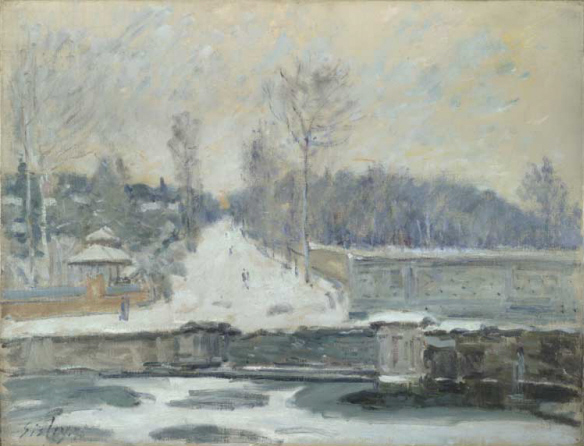Today’s appropriately wintry picture is The Watering Place at Marly-le-Roi by Alfred Sisley, one of the founder-members of the Impressionist group. It was painted in January 1875 and hangs at the National Gallery in London.
Sisley was in his mid-thirties when he and his family moved to Marly-le-Roi, a village 15 kilometres south-west of Paris, in the winter of 1874-5. The previous spring his work had been shown in the Impressionists’ first independent exhibition, which was coolly received by the press. The Impressionists’ style was described as scandalously sketchy, while their conspicuously modern subject matter – city streets, landscapes edged by industrial development, suburbs – was seen as bafflingly banal. Sisley resolutely ignored such criticisms, pursuing fugitive effects of light and weather and developing an extremely economic oil-painting technique – one so minimally suggestive, at times, that he was accused of palming off works-in-progress as if they were the finished article.
The Watering Place at Marly-le-Roi would have been regarded as outrageously “impressionistic” by most French critics and connoisseurs of the mid-1870s. The artist used an extremely restricted palette of just five colours (a brownish earth pigment, cobalt blue, red lake, viridian green, chrome yellow), plus black and white, to create this image of a landscape muffled in snow. He also applied his paint extremely thinly. The canvas he used had been commercially primed with a single layer of colour containing lead white and chalk, lightly tinted with small quantities of a warm dark brown pigment, and the artist used his own paints so sparingly that traces of the suppliers’ ground colour can still be seen in most parts of the picture. It is completely uncovered in much of the sky, where it forms the principal tone, a pinkish beige.
This should not be seen as laziness but...


